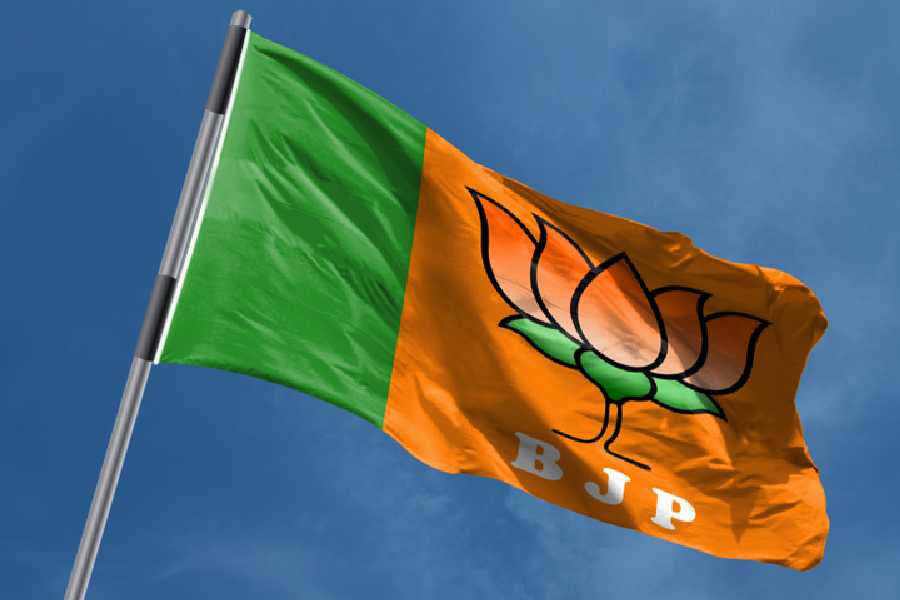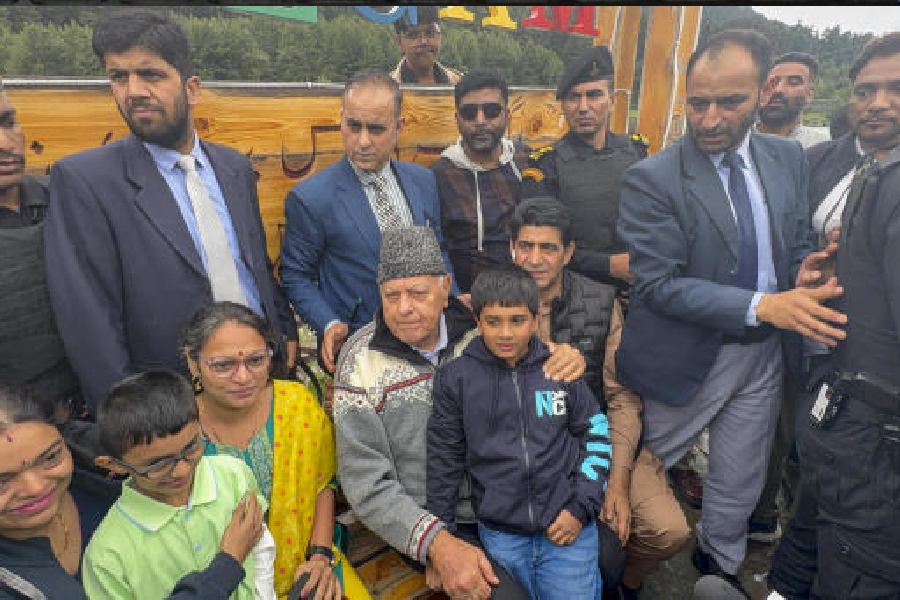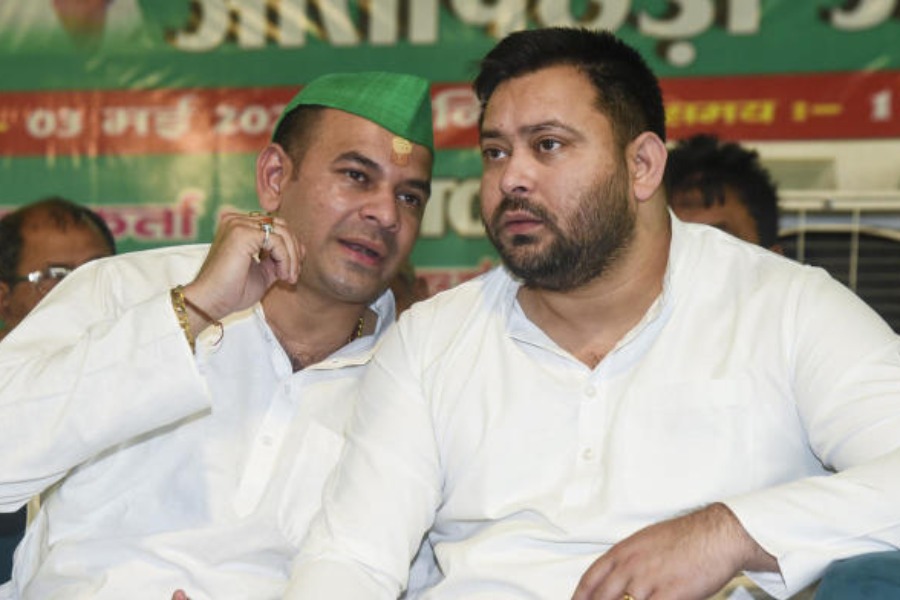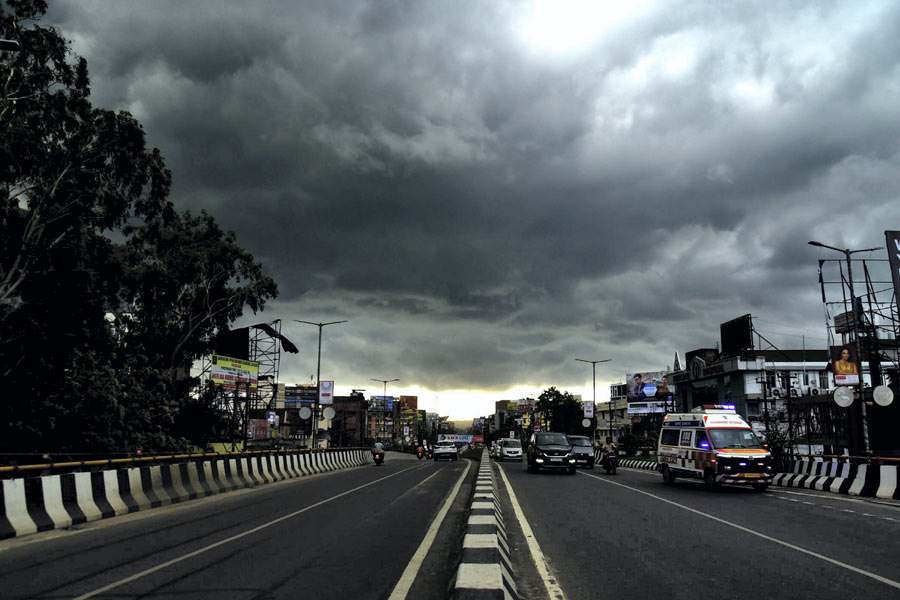 |
| Cerebral content |
As a child in Odisha I looked up to Bengal like most other Odiyas. It was a terribly mixed attitude: we resented any hint of superciliousness among the Bengali elite towards the Odiyas, but at the same time we took a vicarious pride in Bengal’s achievements when compared to other parts of the country. Calcutta, as it then was, was our big city: when anyone went on a visit to Calcutta from my small mofussil town (typically such visits were for buying car-parts and similar things), he was looked upon as a hero.
Above all, however, there was a desire to emulate: if anyone thought of bringing out a literary magazine in Odiya, then Desh would invariably be at the back of his mind as a model. And in the heyday of the Left Front government, when it was dazzling the country with its land reforms and panchayats, I have heard the then chief minister of Odisha, Biju Patnaik, talk of introducing land reforms in Odisha: it had never been a part of his agenda, but since Bengal was doing it, he, too, felt the urge to emulate. At the time of the first United Front government in Bengal, there had even been a still-born attempt to forge a United Front in Odisha, consisting of the communists and the socialists, under the leadership of Nabakrushna Choudhuri, one time doyen of the Left in Odisha.
Literary fashions tended to follow those in Bengal. Those who resented such emulation highlighted the independent literary legacy of the bhakti tradition of Odisha, built around a Vaishnavism centred on the Jagannath cult. But, for the ‘modernists’, Bengal was the source of inspiration, as much for its remarkable literary achievements as for its progressive politics. The literary and the political domains overlapped. Kalindi Charan Panigrahi pioneered the modernist ‘Green’ tradition in Odiya poetry with Annada Shankar Ray, Baikunthanath Patnaik (father of renowned classical vocalist, Sunanda Patnaik) and others. Panigrahi had a brother, Bhagabati Charan, who was a founder of the Communist Party unit in Odisha (and its first secretary). Panigrahi’s daughter, Nandini Satpathy, was a communist activist until she moved to the Congress (and went on to become chief minister). The charisma of Bengal for generations of Odiyas, including my own, lay in this progressive modernism.
When I came to college and studied economics in Delhi, most of my teachers, both in BA and MA, were from Bengal. They were brilliant: among my BA teachers were Naresh Chandra Ray and Sukhamoy Ganguli; and my MA teachers included such outstanding names as Amartya Sen, Sukhamoy Chakravarty and Tapan Raychaudhuri. Every single one of them, in varying degrees, was Left, and inspired students towards progressive thinking. In fact, the general belief in my student days was that of the two main centres of economics in the country, Bombay and Calcutta, one produced economists of the Right-of-Centre, while the other produced economists of the Left-of-Centre.
After every presentation of the Union budget one eagerly awaited the Calcutta papers to read what Bhabatosh Datta had to say, for that would define the Left position. (Ashok Mitra’s and Amiya Bagchi’s pieces were to play the same role later.) Later in life when I became an academic economist, presenting a paper at a seminar in Calcutta became the ultimate test for me, since the audience would be filled with people who were well-versed not only in economics and mathematics, but also in Marxism. And more generally, the plethora of little magazines in Bengali, carrying poems and articles from the Left, the passion for films and theatre, the enormous sensitivity to world currents one came across in young men and women from ordinary lower middle-class Bengali families, were testimony to an intellectual-cultural life whose vigour was unmatched anywhere else in India, except that other little spot of leftism, Kerala. This vigour is what sustained the Left, and was the object of both wonder and envy in Odiyas of my generation.
I may be wrong, but one does not find that vigour in Bengal any more. True, that vigour has gone down everywhere, including Kerala, but the decline in Bengal is far greater than in Kerala. The fact that the critics of neo-liberal economics among Bengali economists are generally close to or above the age of seventy, is, for me, indicative of this shift. One does not feel that intense, passionate radicalism in the air anymore when one visits Calcutta. The two great centres of economics, alas, have become ideologically indistinguishable from one another.
The question that haunts one is: why did this happen? Of course, the appeal of the Left has gone down everywhere with the collapse of the Soviet Union and with China’s transformation to a State where painstaking research becomes necessary to establish whether it is capitalist or socialist. While much of the intellectual vigour of Bengali radicalism was inspired not by the Soviet Union, but, rather in opposition to it, the collapse of the Soviet Union has had the effect nonetheless of cutting the ground under the feet of all the Left, including even those who considered it “social-imperialist”.
But is that an adequate explanation? True, the case of Latin America as a counter-example to show that a radical tradition could survive the collapse of the Soviet Union is an inapposite one: communism of the third international lineage was always weak in Latin America, certainly weaker than in Asia, so that the collapse of its original source could not have had the same traumatic effect there. But paradoxically in Bengal itself, the decline in the Left movement is far less than the decline in Left intellectual ferment, while the collapse of the Soviet Union should have had exactly the opposite effect: it should have affected, as in Europe, the movement more than the ferment. So, something more must be at work.
Some would put the blame for the decline of the radical ferment in Bengal on the long period of Left Front rule itself, though the exact argument here is not clear. Unlike in communist countries marked by one-party dictatorships, where any radical ferment aroused official suspicion and hence tended to get snuffed out, leading to a general de-radicalization of society, Bengal under Left Front rule always had enormous scope for dissent, which, after all, is how the Left Front came to lose power. So, why should the radical ferment have died out in Bengal? True, very long years of one kind of government may produce an ennui that can be quite stifling for intellectual-cultural ferment. But I believe that there have been other, more potent, factors behind the de-radicalization process.
Neo-liberal economic policies have had a devastating effect on the peasantry, the petty producers and manual workers of all descriptions, including even in the organized sector, who have seen, if anything, a decline in their real wages compared to the late 1980s. But, they have, until recently at any rate, been beneficial for large segments of the middle class. This situation may change, and I believe is changing, but one important difference between Latin America and India until now has been that the middle class there had been a victim of neo-liberalism while it has done rather well here. This is one reason for the radical turn in Latin America and the absence of it in India, for the middle class has a social importance far greater than its numerical size would suggest: it is often the original source from which protest movements typically begin, which are then carried forward by the toiling classes.
The kind of crisis of the middle class in Bengal, depicted, for example, in Mrinal Sen’s film, Chorus, which produced remarkable protest movements in the late 1960s and early 1970s, and which contributed inter alia to the victory of the Left Front, no longer exists. The Left Front, much maligned these days, contributed to an alleviation of that crisis long before neo-liberalism appeared on the horizon. But with the appearance of neo-liberalism, more benefits came the way of the middle class, not just in Bengal but all over the country, which acted to mute the radicalism that had characterized the Bengali middle class for long.
To say this is not to malign the middle class in any way. Just as the relative quietude of the workers in the advanced capitalist countries over a long historical period is explicable by their becoming economically better off (until of late under globalization), likewise the recent quietude of the Bengali middle class owes much to its economic betterment. The situation, however, is likely to change soon, with a new wave of radicalization on the horizon, both there and here.










